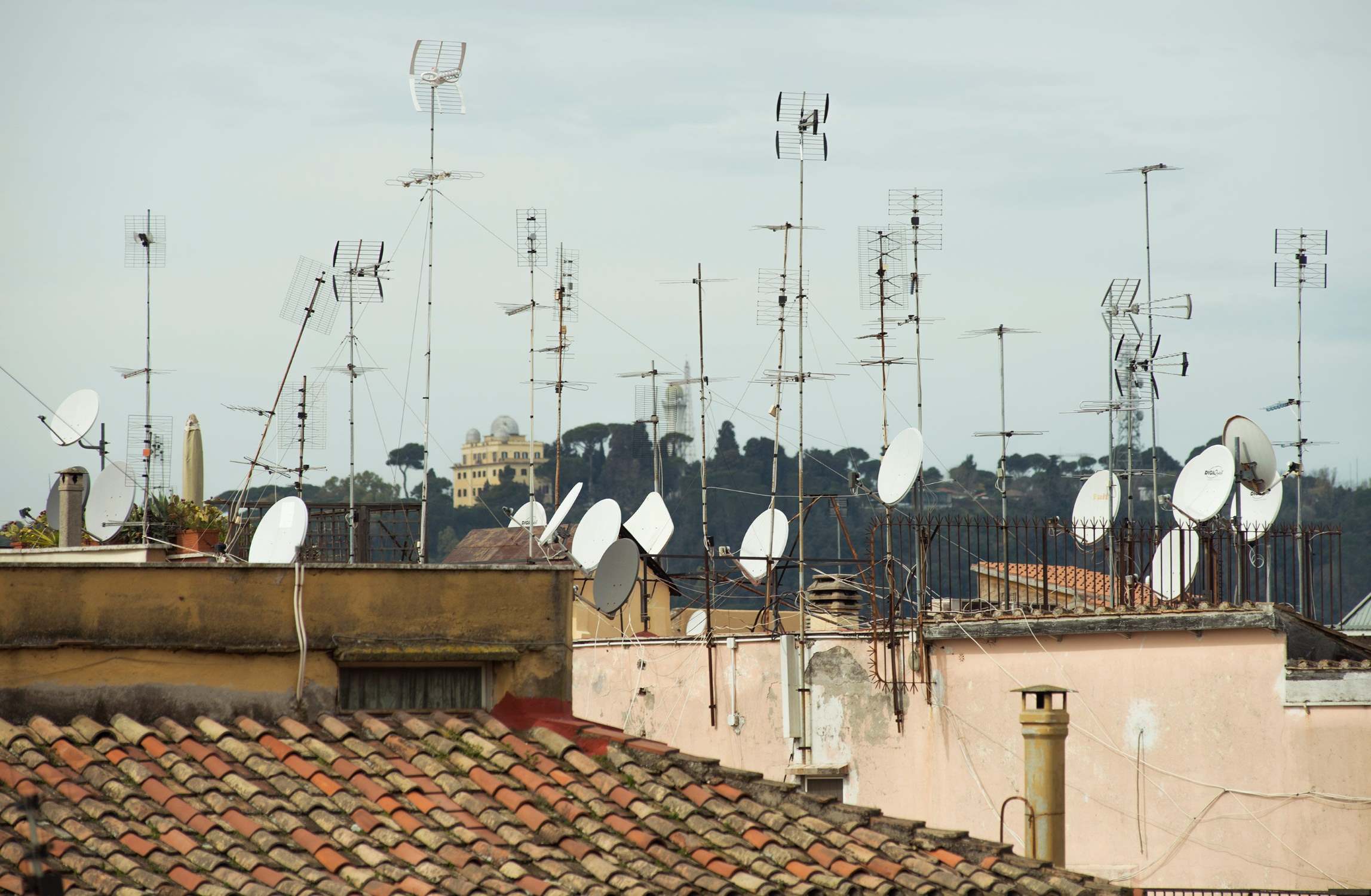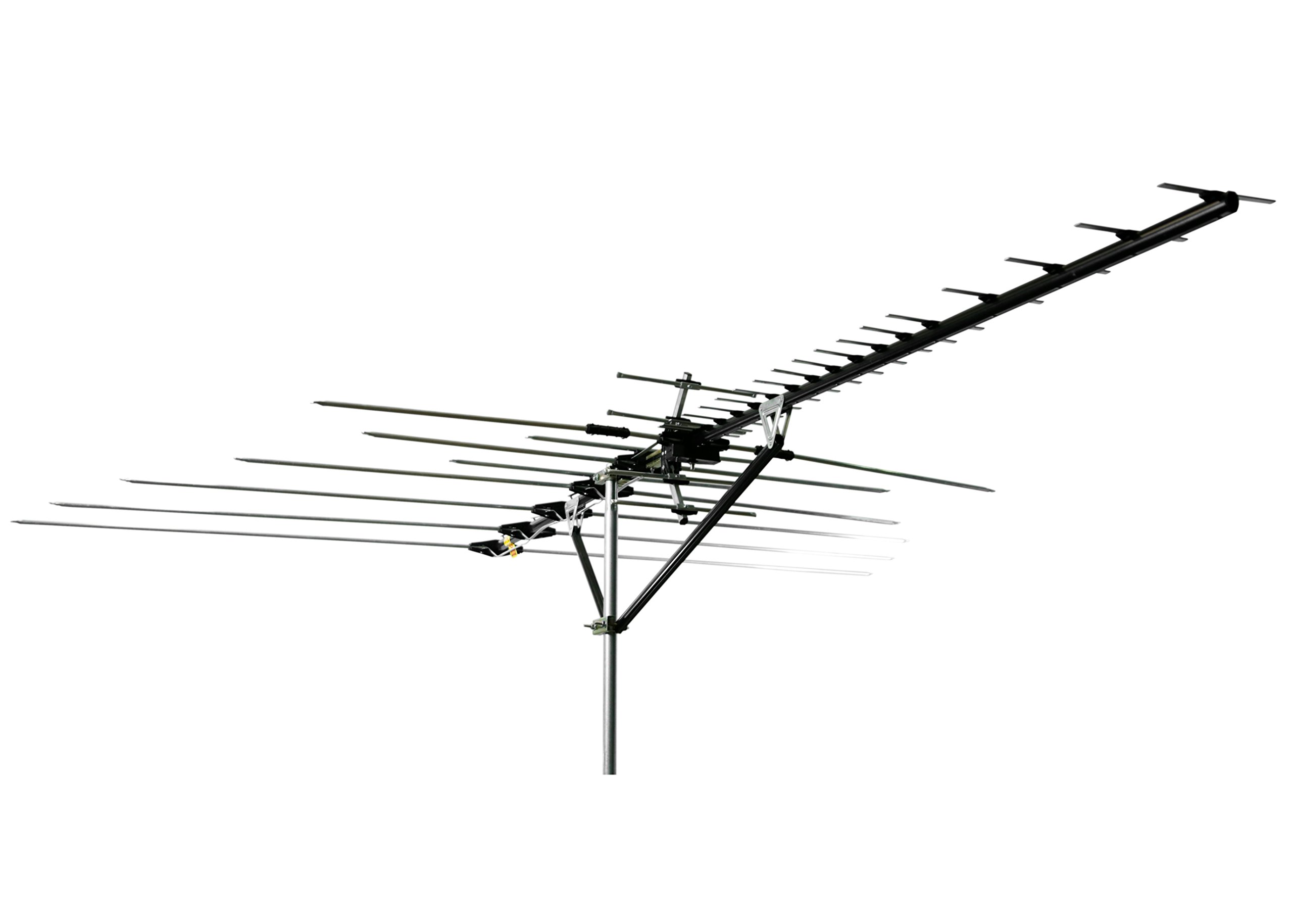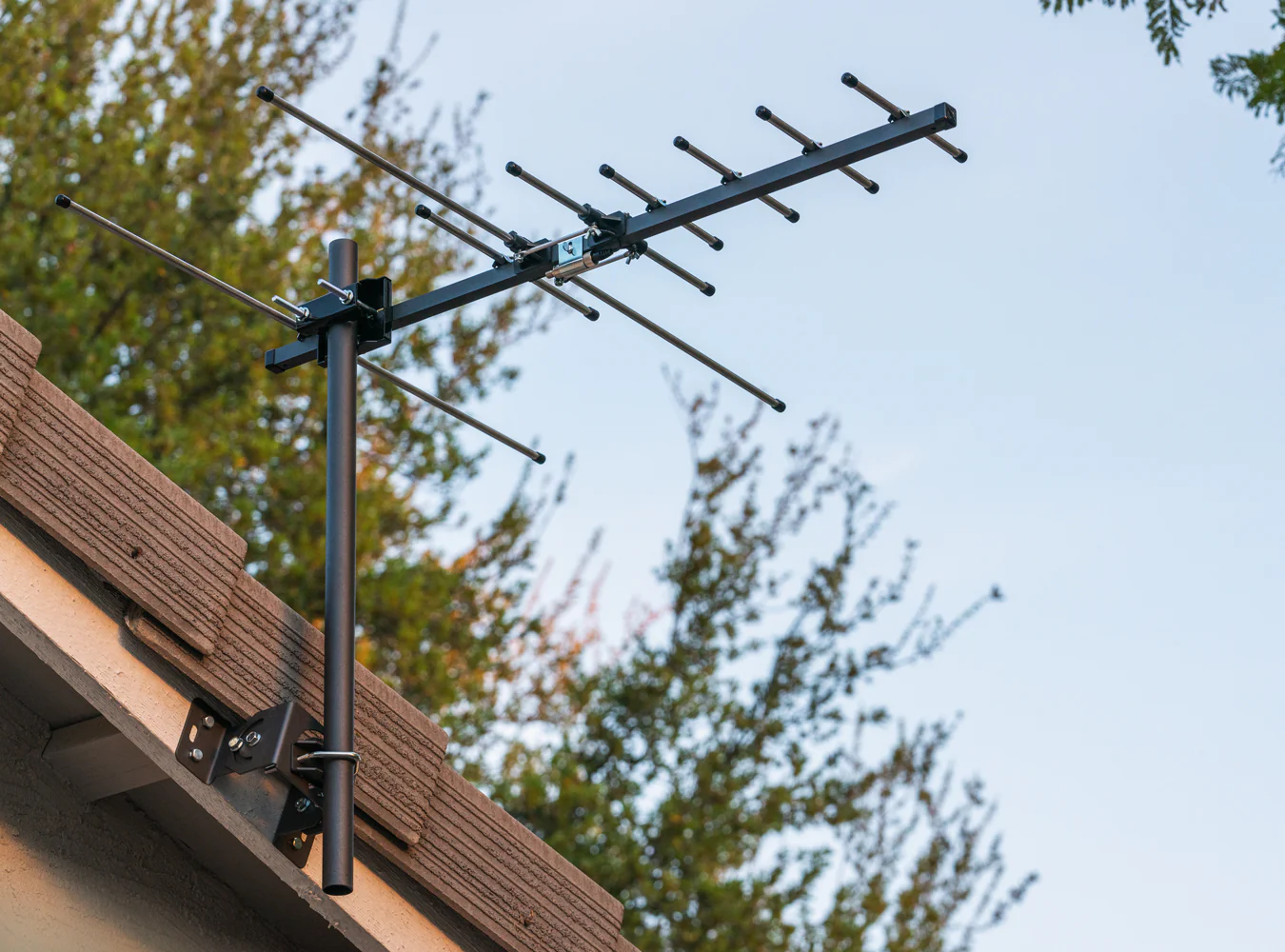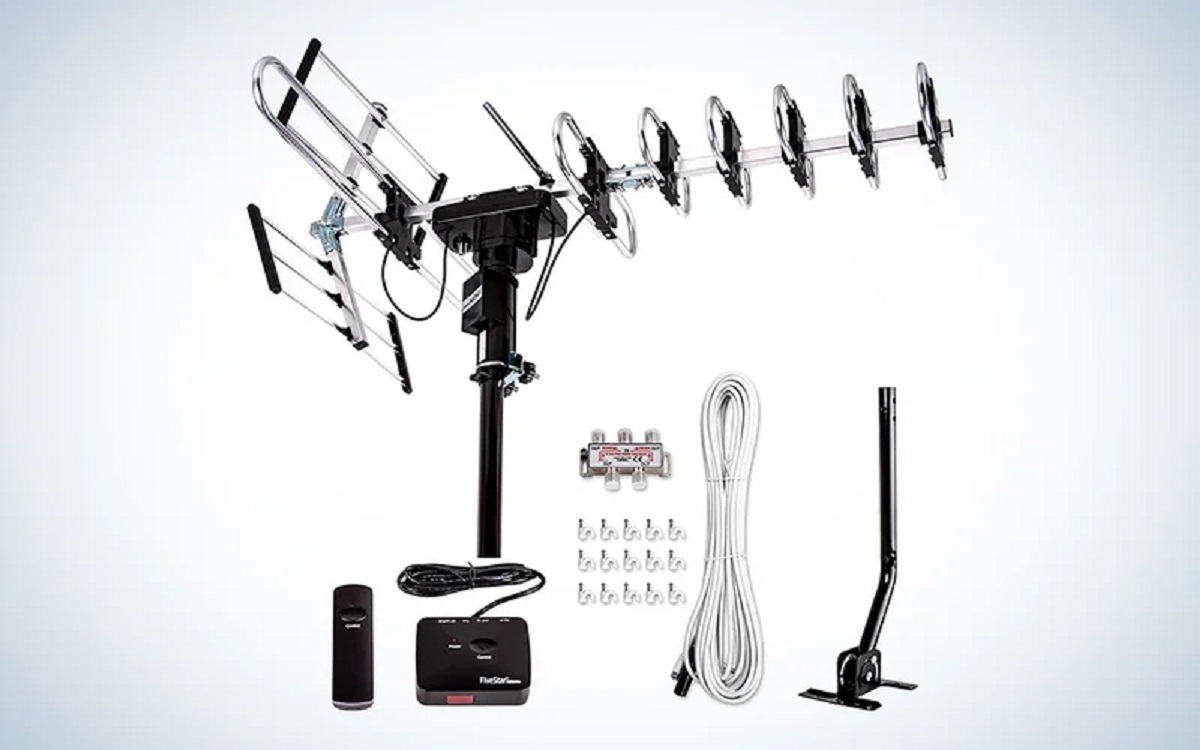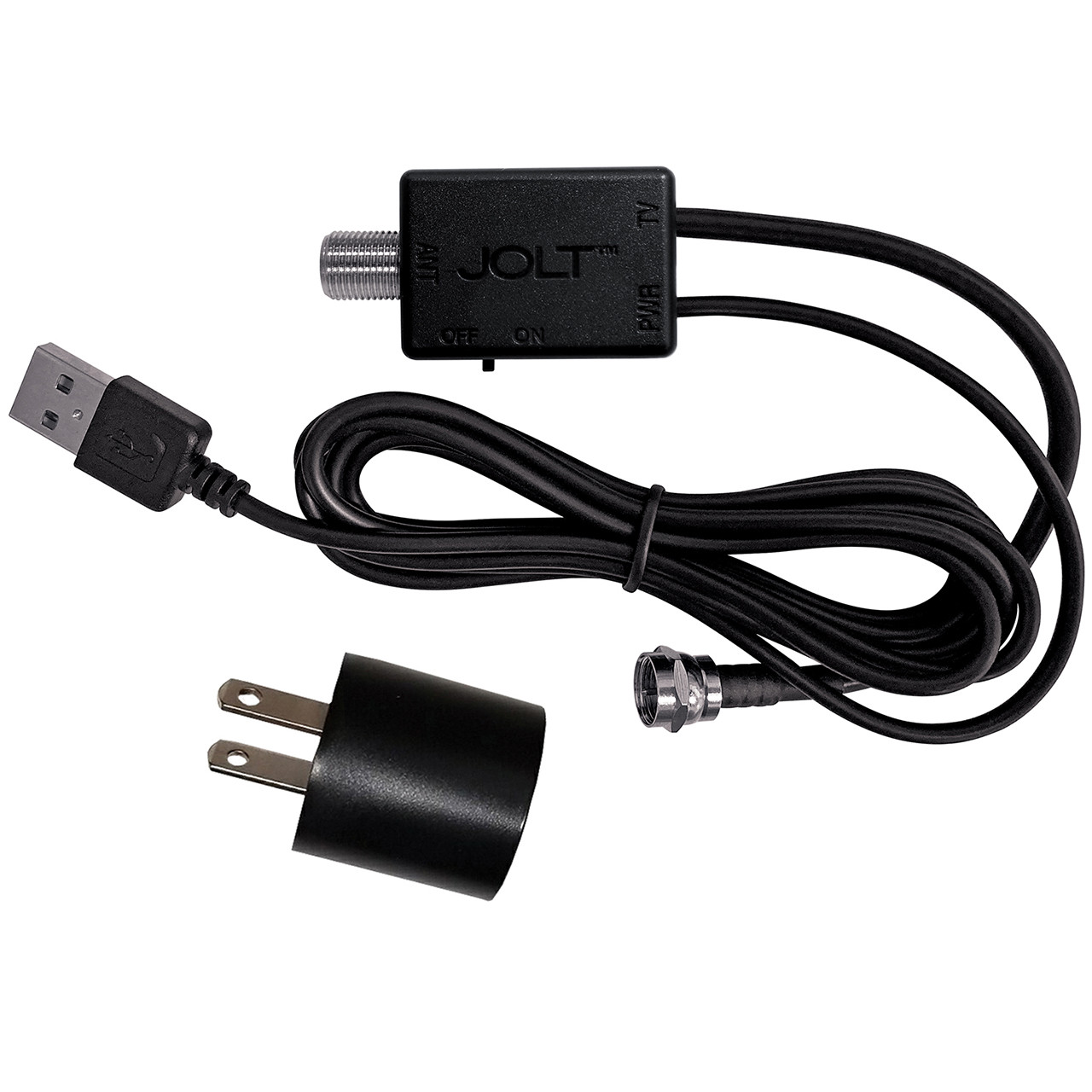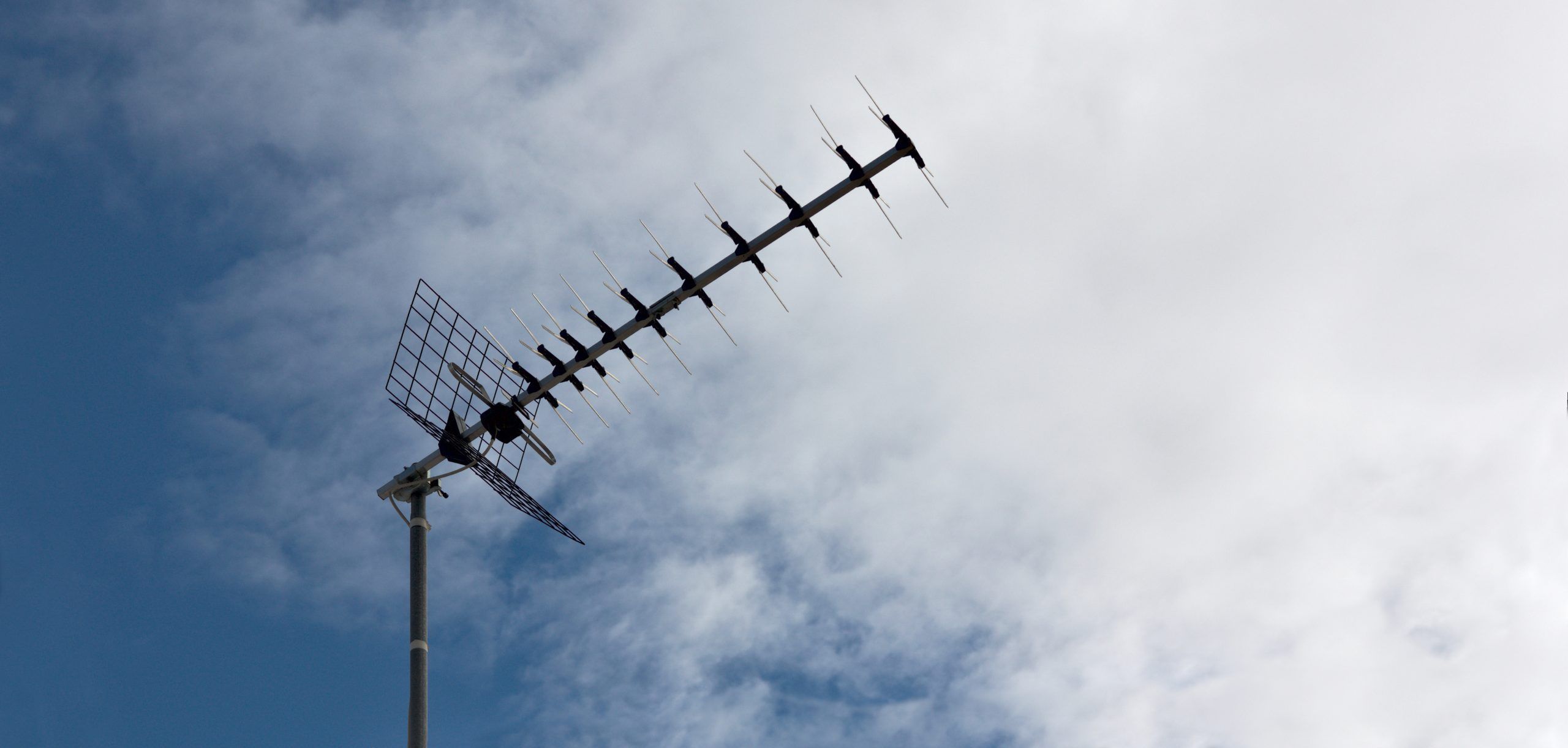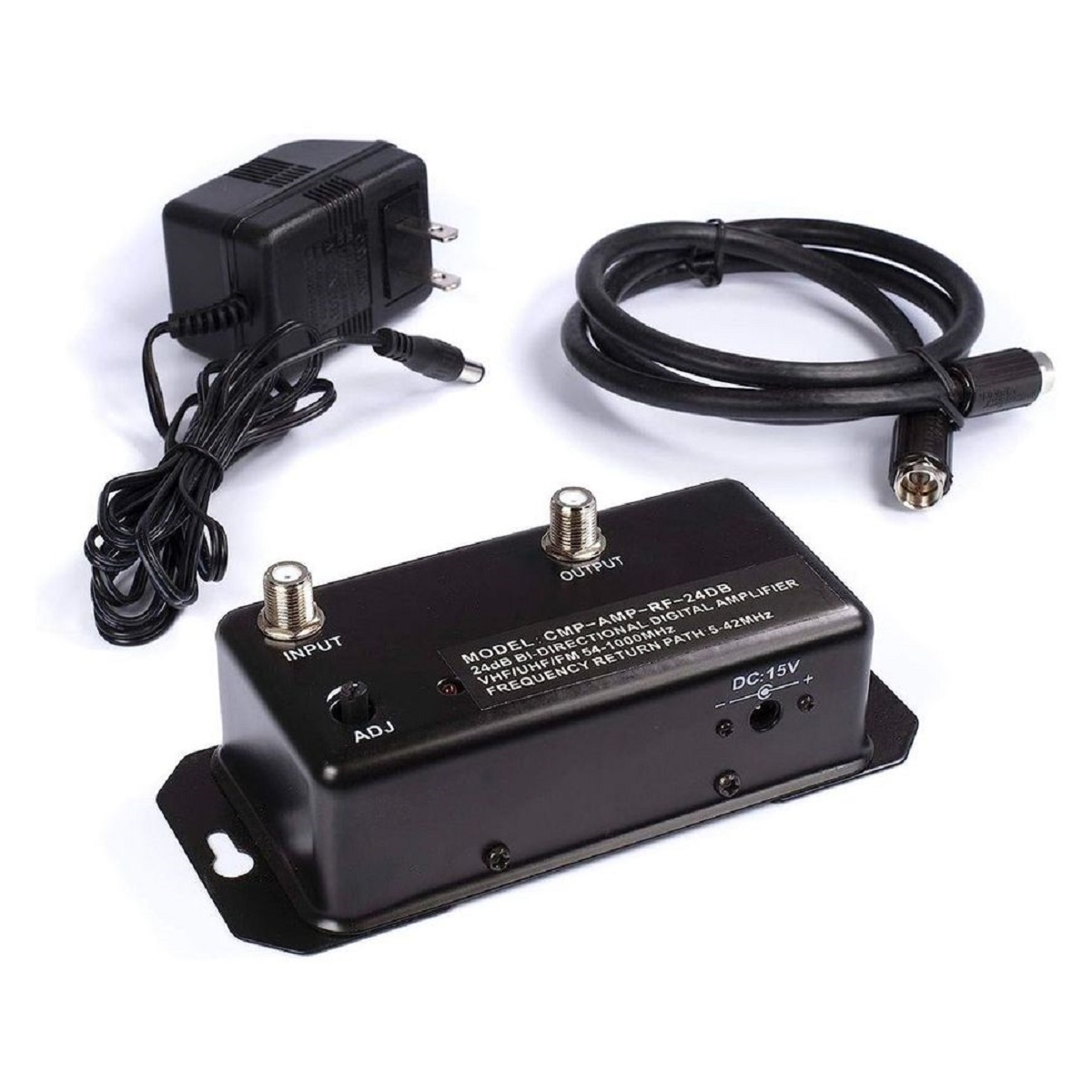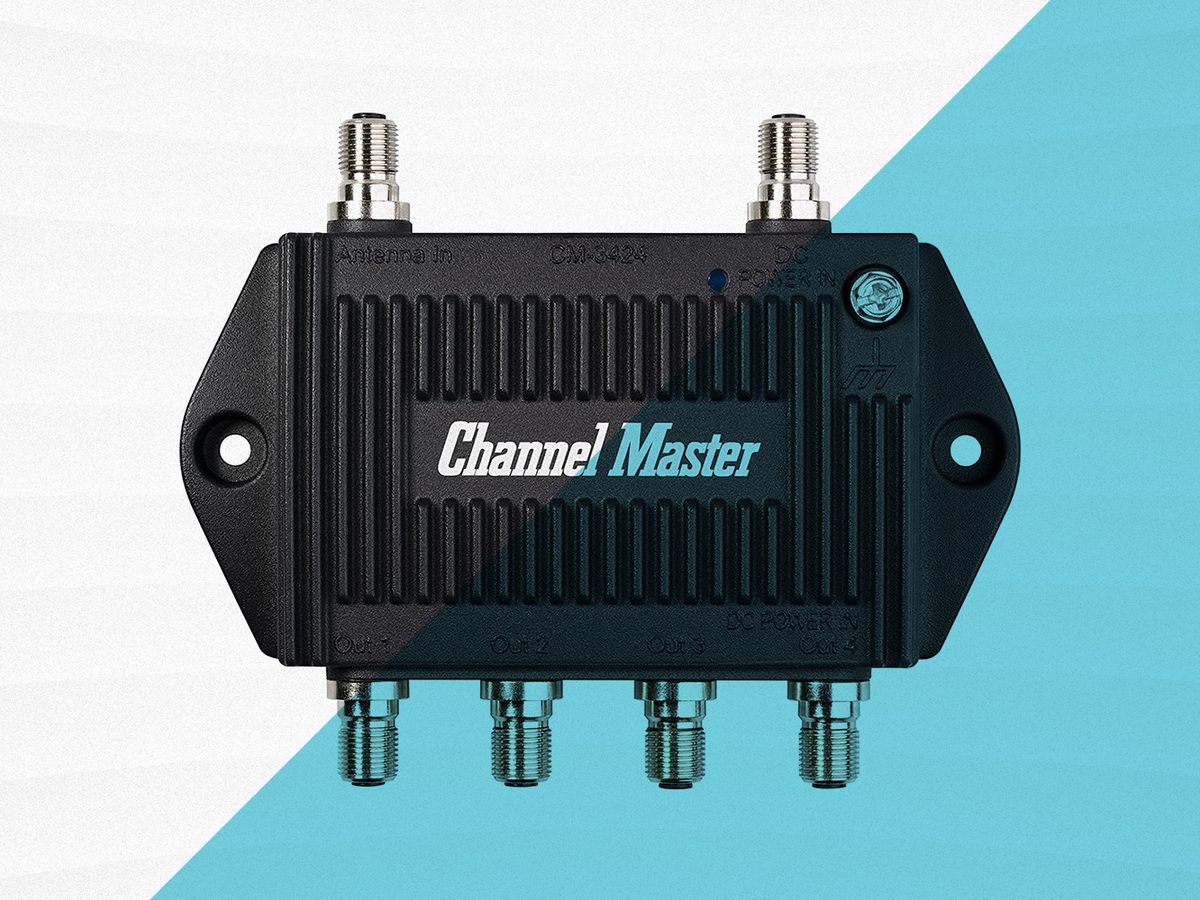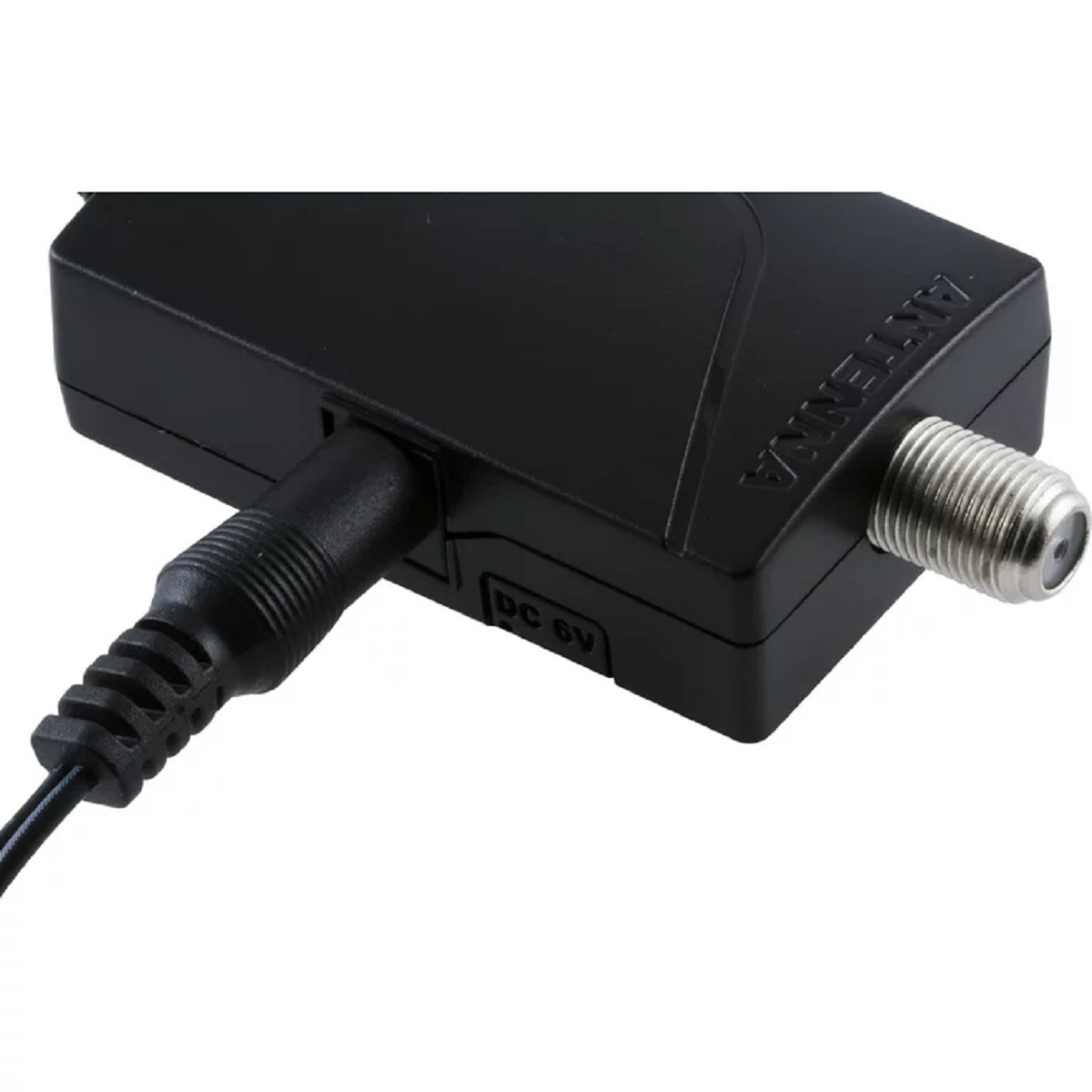Introduction
Welcome to the world of television antenna reception! Whether you’re a cord-cutter looking to enjoy your favorite TV shows and movies without the hassle of cable or satellite subscriptions, or you simply want to enhance the quality of your over-the-air broadcasts, improving your TV antenna reception is essential.
Having a good TV antenna signal is crucial for receiving clear, high-definition signals from local broadcast stations. However, many factors can affect the strength and clarity of the signal, leading to poor reception and frustrating viewing experiences.
In this article, we will explore various tips and techniques to help you maximize your TV antenna reception. From finding the best location for your antenna to upgrading to a more powerful model, we will cover all aspects of improving your antenna’s performance.
By implementing these strategies, you will be able to enjoy crystal-clear reception, vibrant colors, and uninterrupted viewing of your favorite television shows.
So, if you’re ready to take your TV viewing experience to new heights, let’s dive into the world of TV antenna reception and unleash the full potential of your antenna!
Understanding TV Antenna Reception
Before we delve into the tips for improving TV antenna reception, it’s important to understand the factors that affect the quality of your signal. By gaining a better understanding of these factors, you can make informed decisions and optimize your antenna setup.
The first thing to understand is that TV antennas receive broadcast signals from nearby television stations. These signals are transmitted over the airwaves and can be affected by various environmental factors. The quality of your reception depends on the strength of the signal and the absence of interference.
One of the primary factors affecting antenna reception is distance. The farther you are from the broadcast tower, the weaker the signal may be. Additionally, obstacles such as buildings, trees, and hills can obstruct the signal and cause interference.
Furthermore, the frequency of the channel you want to receive can also impact reception. UHF (Ultra High Frequency) channels have a shorter wavelength and are more affected by obstructions, while VHF (Very High Frequency) channels have a longer wavelength and can travel further distances with fewer obstacles.
Signal interference can also come from nearby electronic devices, such as smartphones, computers, and even household appliances. These devices emit electromagnetic waves that can disrupt the TV signal if they are too close to the antenna.
To improve your TV antenna reception, it’s crucial to find the best location for your antenna, adjust its position for optimal signal strength, and minimize any sources of interference. Additionally, considering factors like upgrading your antenna or using signal amplifiers can further enhance your reception.
Now that you have a solid understanding of TV antenna reception, let’s move on to the practical tips that will help you improve your reception and elevate your TV viewing experience.
Tips for Improving TV Antenna Reception
Now that you understand the basics of TV antenna reception, let’s explore some practical tips to enhance your antenna’s performance:
- Find the Best Location for Your Antenna: Start by locating the broadcast towers in your area using online tools or apps. Position your antenna in a place with a clear line of sight to these towers. Avoid placing it near metal objects or dense obstructions.
- Adjust the Antenna’s Position: Experiment with different angles and orientations to find the best position for maximum signal strength. Sometimes even a slight adjustment can make a significant difference in reception.
- Check for Signal Blockers: Identify any potential obstructions between your antenna and the broadcast towers. Trees, tall buildings, or even nearby structures can hinder the signal. If possible, consider repositioning your antenna or trimming trees to improve reception.
- Upgrade Your Antenna: If you live far from the broadcast towers or frequently experience poor reception, consider upgrading to a more powerful antenna. Look for antennas with higher gain and multi-directional capabilities to capture signals from different directions.
- Use a Signal Amplifier: In situations where the signal is weak, a signal amplifier can boost the antenna’s performance. Simply connect the amplifier between the antenna and your TV to strengthen the received signal.
- Consider a Rotating Antenna: If you receive signals from multiple directions, a rotating antenna can be beneficial. This type of antenna can be controlled remotely and adjusted to capture signals from different broadcast towers, ensuring optimal reception.
- Properly Ground Your Antenna: Grounding your antenna is crucial for safety and signal quality. Consult a professional to ensure your antenna is correctly grounded, as this can help reduce interference and improve reception.
By implementing these tips, you can significantly enhance your TV antenna reception and enjoy a clearer, more reliable viewing experience. Experiment with different techniques and optimizations to find the best setup for your specific location.
Now that you’re armed with these tips, it’s time to put them into action and elevate your TV antenna reception to new heights!
Find the Best Location for Your Antenna
The location of your TV antenna plays a crucial role in determining the quality of your reception. To find the best location, follow these steps:
- Research Broadcast Towers: Use online tools or apps to identify the location of broadcast towers in your area. Understanding the direction and distance of these towers will help you position your antenna effectively.
- Choose a Centralized Location: Ideally, place your antenna in a central location within your home. This will minimize the signal loss caused by walls and other obstructions, ensuring consistent reception throughout your living space.
- Maximize Line of Sight: Look for a spot that has a clear line of sight to the broadcast towers. Avoid placing your antenna in areas obstructed by trees, tall buildings, or other structures. The more direct the path between your antenna and the towers, the stronger your signal will be.
- Avoid Interference: Keep your antenna away from sources of interference such as large metal objects, electrical appliances, or electronic devices. These can disrupt the signal and reduce reception quality.
- Outdoor vs. Indoor: Consider whether an outdoor or indoor antenna is more suitable for your situation. Outdoor antennas generally provide better reception as they have fewer obstructions, but indoor antennas can be sufficient depending on your proximity to the broadcast towers.
- Test Different Locations: Don’t be afraid to experiment with different positions for your antenna. Even small adjustments, such as raising it higher or rotating its direction, can have a significant impact on reception quality. Test out various locations to find the one that offers the best signal strength.
Remember, finding the best location for your antenna may require some trial and error. Explore different options, test the signal strength with your TV, and make adjustments as necessary to achieve optimal reception.
By taking the time to locate the ideal position for your antenna, you can lay the foundation for excellent reception and enhance your overall TV viewing experience.
Adjust the Antenna’s Position
Once you have found a suitable location for your TV antenna, the next step is to fine-tune its position for optimal signal reception. Follow these tips to adjust the antenna effectively:
- Check the Signal Strength: Start by connecting your antenna to your TV and accessing the signal strength meter in your TV’s settings. This will help you monitor the changes in signal strength as you adjust the antenna’s position.
- Begin with a Baseline Position: Set your antenna in a vertical or horizontal position as a starting point. This will depend on the type of antenna you have, as some are designed to be mounted horizontally while others work better vertically.
- Rotate the Antenna: Slowly rotate the antenna in small increments, using the signal strength meter to gauge the impact of each adjustment. Keep an eye on the changes in signal strength as you rotate, as there may be a specific angle that provides optimal reception.
- Try Different Angles: Experiment with different angles for the antenna. Adjust it to point slightly upward, downward, or to the side to see if this improves signal reception. Sometimes a slight tilt can make a significant difference in signal strength.
- Reposition the Antenna: If rotating the antenna doesn’t yield satisfactory results, consider repositioning it to a different spot within the same general location. Sometimes a small change in position can help capture a stronger signal.
- Re-scan for Channels: After adjusting the antenna, it’s important to re-scan for channels on your TV. This process will enable your TV to detect any new channels or improvements in reception resulting from the antenna adjustments.
Remember, each adjustment should be made gradually and patiently observed for signal strength changes. It may take some time and experimentation to find the optimal position for your antenna, but the improved reception will be worth it.
Don’t hesitate to repeat the adjustment process if you relocate your antenna or if you’re experiencing changes in signal quality due to environmental factors or other obstructions.
By fine-tuning the position of your antenna, you can maximize signal strength and ensure reliable reception of your favorite TV channels.
Check for Signal Blockers
Signal blockers can significantly impact your TV antenna reception, leading to weak or unreliable signals. To ensure optimal reception, it’s essential to identify and address any potential signal blockers. Follow these steps to check for and mitigate signal interference:
- Identify Potential Obstructions: Look for any tall structures, buildings, trees, or natural formations that may obstruct the line of sight between your antenna and the broadcast towers. These obstacles can weaken the signal or cause signal reflections that lead to interference.
- Inspect Nearby Trees and Foliage: If you have trees near your antenna, check if their branches or leaves are obstructing the signal path. Trimming or pruning the foliage can often help improve reception, allowing for a clearer signal to reach your antenna.
- Consider External Obstructions: It’s not just natural obstructions that can block your signal. Some building materials, such as metal, concrete, or brick, can also interfere with the signal. If your antenna is indoors, consider relocating it near windows or away from excessively obstructive surfaces.
- Move or Reorient Objects: Experiment with moving or reorienting any objects near your antenna that could potentially interfere with the signal. Large furniture, appliances, or even metallic objects may obstruct the signal path and cause interference. Rearranging these objects can help improve reception.
- Consider Signal Reflectors: Signal reflectors can help redirect and strengthen the signal by bouncing it towards your antenna. These can be as simple as aluminum foil or purpose-built reflectors designed to enhance signal reception. Experiment with positioning them strategically to improve reception quality.
- Adjust the Antenna Height: In some cases, the height of your antenna can make a significant difference in signal reception. If possible, elevate your antenna by placing it higher up, such as on a rooftop or attic, to minimize obstruction and improve line of sight to broadcast towers.
By checking for and addressing potential signal blockers, you can optimize your TV antenna reception and minimize interference. Remember, it may require some trial and error to identify and mitigate specific obstructions, but the result will be a clearer and more reliable signal.
Regularly reassess your surroundings, especially if you notice changes in reception quality, and make the necessary adjustments to maintain optimal signal reception.
Upgrade Your Antenna
If you’re still experiencing poor TV antenna reception after trying the previous tips, it may be time to consider upgrading to a more powerful antenna. Here’s why upgrading your antenna can significantly improve your reception:
Enhanced Signal Capture: Upgrading to a more powerful antenna can increase your antenna’s ability to capture signals from broadcast towers. High-gain antennas are designed to boost reception, making them suitable for areas located far from broadcast sources or with weaker signals.
Improved Range and Directionality: Some antennas offer multi-directional capabilities, allowing them to receive signals from different directions. This feature is particularly useful if you’re located in an area with broadcast towers spread across various positions. Upgrading to a multi-directional antenna enhances your chances of picking up signals from all directions.
Better Signal Amplification: Upgraded antennas often come equipped with built-in signal amplifiers. These amplifiers strengthen the received signal, compensating for any losses caused by long cable runs or distribution splitters. The result is improved signal quality and less susceptibility to interference.
Specialized Antennas for Specific Needs: Depending on your location and requirements, there are specialized antennas available that may better suit your needs. For example, if you’re situated in a rural area, you can consider purchasing a long-range antenna designed for receiving signals over extended distances.
Consider Outdoor vs. Indoor: Indoor antennas are often convenient and easy to install, but upgrading to an outdoor antenna can offer even better reception. Outdoor antennas are generally larger, have higher signal gain, and can be mounted higher, minimizing obstructions and improving overall reception quality.
Consult Professionals: If you’re unsure about which antenna to select or need help with installation, consider reaching out to professionals who specialize in antenna systems. They can assess your unique situation and recommend the most suitable antenna based on your location, signal strength, and other factors.
Keep in mind that upgrading your antenna does not guarantee perfect reception in all situations. The effectiveness of the upgrade will still depend on factors such as your location, distance from broadcast towers, and the presence of signal obstacles. Nonetheless, upgrading to a more powerful or specialized antenna can significantly enhance your TV antenna reception and elevate your viewing experience.
Do thorough research, read customer reviews, and consult professionals when choosing the right antenna for your needs. With the right upgrade, you’ll enjoy clear, high-quality television signals for a more immersive watching experience.
Use a Signal Amplifier
If you’re struggling with weak TV antenna reception, using a signal amplifier can significantly boost the strength of the signal and improve your overall reception. Here’s how a signal amplifier can enhance your antenna performance:
Signal Strength Boost: A signal amplifier, also known as a preamplifier or a signal booster, amplifies the received television signal from the antenna before it reaches your TV. This boost in signal strength compensates for any signal loss that may occur due to long cable runs or distribution splitters.
Improved Signal Quality: In addition to increasing signal strength, a signal amplifier also helps to improve the overall signal quality. It amplifies the weaker signals, reducing the impact of interference and noise that may affect the reception. The result is a clearer and more stable television signal.
Compensate for Long Cable Runs: If you have a long cable run between your antenna and the television, signal loss can occur along the cable’s length. A signal amplifier can help minimize this signal loss, ensuring that an adequate signal is delivered to your TV. It’s particularly useful when you have multiple outlets or distribute the signal to multiple televisions.
Easy Installation: Signal amplifiers are relatively easy to install. They typically sit between the antenna and the TV or between the antenna and the distribution splitter. Most signal amplifiers come with straightforward instructions and require minimal setup, making them accessible even for those with limited technical knowledge.
Compatibility Considerations: When choosing a signal amplifier, ensure compatibility with your antenna system. Check the frequency range and the type of signals the amplifier can handle. Some signal amplifiers are designed specifically for UHF or VHF signals, while others support both. Make sure to select an amplifier that aligns with the signals you wish to boost.
Placement and Powering: Follow the manufacturer’s instructions regarding the placement and powering of the signal amplifier. Typically, it should be installed close to the antenna, preferably before any distribution splitters or lengthy cable runs. Additionally, ensure that the amplifier is powered appropriately, either through a power adapter or by utilizing the power inserter provided with the amplifier.
Remember, while signal amplifiers can enhance your TV antenna reception, they are not a cure-all solution. They work best in situations where the signal is weak due to distance from the broadcast towers or signal loss along the cable. If there are significant obstructions or other signal interference issues, consider addressing those as well.
By incorporating a signal amplifier into your TV antenna setup, you can enjoy improved signal strength and quality, resulting in a more enjoyable and reliable television viewing experience.
Consider a Rotating Antenna
If you receive TV signals from multiple directions or if the broadcast towers in your area are spread across different positions, considering a rotating antenna can greatly enhance your TV antenna reception. Here’s why a rotating antenna can be beneficial:
Capture Signals from Different Directions: A rotating antenna, also known as a motorized or rotatable antenna, allows you to adjust the antenna’s direction to receive signals from various broadcast towers. This flexibility is particularly useful in areas where the towers are spread out or when you want to target specific channels that come from different directions.
Optimal Signal Reception: By being able to rotate the antenna, you can fine-tune its position to achieve optimal signal reception. This means you can precisely align the antenna to face the strongest signal source, minimizing signal disruption and improving the quality of the received TV signal.
Overcome Obstructions: In some cases, there may be physical obstructions such as buildings, trees, or hills between your antenna and the broadcast towers. A rotating antenna allows you to adjust the direction until you find the sweet spot with the least obstruction, maximizing signal strength and minimizing interference.
Easy Adjustment with Remote Control: Most rotating antennas come with a remote control that makes adjusting the antenna’s direction a breeze. With the touch of a button, you can perform 360-degree rotations to find the optimal position without having to physically adjust the antenna or climb onto the roof.
Automatic Channel Scanning: Some rotating antenna systems come equipped with automatic channel scanning capabilities. This means that once you set up the initial rotation alignment, the antenna can automatically scan for available channels and adjust its position accordingly. This feature enhances convenience and ensures you don’t miss out on any available channels.
Considerations for Installation: When installing a rotating antenna, it’s important to ensure a stable mounting position to allow for smooth and consistent rotation. Ensure that the antenna’s motor and rotator mechanism are weatherproof and durable to withstand various weather conditions and provide long-lasting performance.
Before choosing a rotating antenna, assess your specific reception needs and determine if multiple broadcast towers and reception from different directions are relevant to your location. Also, keep in mind that rotating antennas may require additional setup and may be more expensive than fixed antennas.
By considering a rotating antenna, you can enjoy the flexibility to capture signals from various directions, overcome obstructions, and achieve optimal reception quality for a wide range of TV channels.
Properly Ground Your Antenna
Properly grounding your TV antenna is not only important for safety reasons but also plays a critical role in improving TV antenna reception. Here’s why grounding your antenna is essential and how to do it correctly:
Electrical Safety: Grounding your antenna ensures that any potentially dangerous electrical charges are safely directed into the ground. This helps protect your equipment from power surges caused by lightning strikes or other electrical disturbances, reducing the risk of damage to your antenna, TV, and other connected devices.
Minimize Interference: Grounding your antenna helps minimize interference caused by static electricity and electromagnetic waves. Electrical charges can build up on your antenna, leading to signal distortions and poor reception. Proper grounding helps dissipate these charges, reducing interference and improving the overall quality of the TV signal.
Compliance with Electrical Codes: Grounding your antenna is often required by electrical codes to ensure safe and reliable operation. It is important to consult local regulations and follow guidelines specific to your region to ensure compliance with safety standards.
How to Ground Your Antenna: Here are the general steps to follow for grounding your antenna:
- Consult a Professional: While grounding an antenna is relatively straightforward, if you are uncertain or not comfortable with electrical work, it is advisable to seek assistance from a qualified professional.
- Locate a Suitable Grounding Point: Identify a suitable grounding point near the antenna, such as a metal rod driven into the earth. The grounding point should be at least 8 feet long and buried deep enough to establish a good electrical connection with the ground.
- Connect the Grounding Wire: Use a grounding wire made of copper or copper-clad steel with a sufficient gauge to connect the antenna mast or mount to the grounding point. Attach one end of the wire to the antenna mast or mount and the other end to the grounding point using suitable connectors or clamps.
- Protect the Connection: Once the grounding wire is properly connected, protect the connection from moisture and corrosion by using weatherproof materials such as waterproof tape or heat shrink tubing. This will ensure the longevity and reliability of the ground connection.
- Regularly Inspect and Maintain: Periodically inspect the grounding system to ensure it remains in good condition. Check for any loose connections, damage, or signs of corrosion. Repair or replace any worn-out components promptly to maintain the effectiveness of the grounding system.
Remember to follow all safety precautions and guidelines when working with electricity and consult local regulations for specific grounding requirements in your area.
By properly grounding your antenna, you not only ensure electrical safety but also minimize interference and improve the overall reception quality of your TV antenna.
Conclusion
Improving TV antenna reception is essential for a clear and enjoyable television viewing experience. By following the tips and techniques outlined in this article, you can optimize your antenna setup and maximize signal strength. Let’s recap the key points discussed:
We started by understanding the basics of TV antenna reception and the factors that affect its quality. By grasping these fundamentals, you can make informed decisions when implementing the following tips.
We then explored various tips for improving TV antenna reception:
- Finding the best location for your antenna is crucial. Research broadcast towers, choose a centralized location, maximize line of sight, and avoid interference.
- Adjusting the antenna’s position is essential for optimal reception. Experiment with rotations and angles to find the sweet spot.
- Checking for signal blockers and minimizing obstructions improves signal strength. Trim foliage, reposition objects, and be aware of material interference.
- Upgrading your antenna may be necessary for better reception. Consider higher-gain models or specialized antennas based on your needs.
- Using a signal amplifier can boost the signal strength and improve overall reception, especially for long cable runs or weak signals.
- A rotating antenna allows you to capture signals from different directions, which is useful when towers are spread out. Adjusting the antenna’s direction unlocks optimal reception.
- Properly grounding your antenna is important for electrical safety and minimizing interference. Follow electrical codes and consult professionals if needed.
By implementing these tips, you can significantly enhance your TV antenna reception, resulting in a clearer and more reliable television signal.
Remember, every situation is unique, and it may require some trial and error to find the perfect setup for your specific circumstances. Don’t hesitate to experiment, seek professional advice if needed, and regularly reevaluate your antenna system to maintain optimal performance.
Now armed with this knowledge, you can take full advantage of your TV antenna and enjoy a superior TV viewing experience with crisp images, vibrant colors, and uninterrupted reception.







